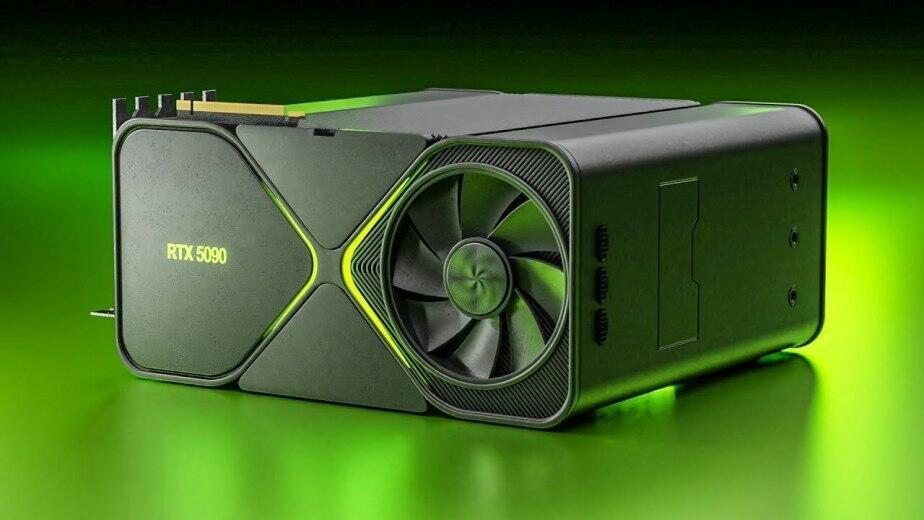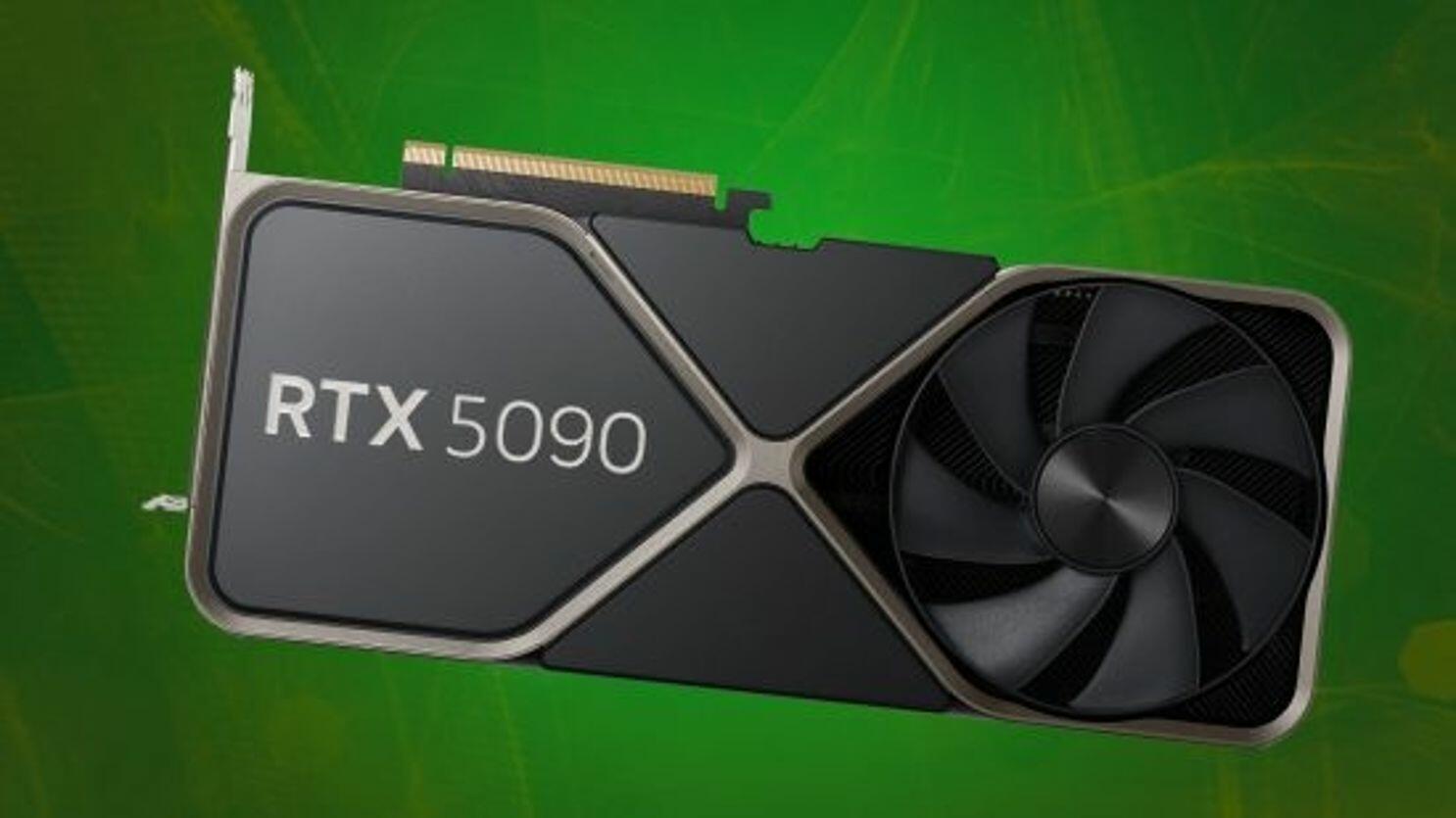The NVIDIA GeForce RTX 5090 GPU could be the result of the RTX 4090 Ti GPU being totally skipped and heading straight to the next-gen flagship. Anticipated for a 2025 release, the RTX 5090 is rumored to utilise the GB202 die and feature and an impressive 512-bit memory bus, delivering an incredible 2TB/sec of memory bandwidth, double that of the current RTX 4090 and could boast either faster GDDR6X memory or the much-talked-about next-gen GDDR7 memory.
The entire series uses a 4nm process node, also found in many mobile processors and several reports have suggested that the upcoming RTX 50 series will be built on the more advanced 3nm node
Like the RTX 40 series, the RTX 5090 graphics card will also be based on a monolithic design because they both utilise a smaller process node, the transistor counts could exceed a billion, with densities reaching nearly 150 billion/mm².
Taking a look numbers and process specs, the N3 process provides a 60% to 70% higher logic density and a 15% higher performance while consuming 30% to 35% less power compared to the 5nm node
In response, AMD may introduce a new Radeon RX series GPU equipped with its second-gen 3D V-Cache technology borrowed from its Ryzen CPU series.
As competition intensifies, NVIDIA aims to maintain its leadership in GPU performance, making the RTX 5090’s massive 512-bit memory bus and 2TB/sec memory bandwidth an appealing prospect for gaming enthusiasts.
Notably, it has been quite some time since NVIDIA utilized such a wide 512-bit memory bus on a GeForce GPU, making this potential move a significant shift for Team Green.
While the release of the GeForce RTX 5090 and GeForce RTX 5080 is still approximately 18+ months away, the teaser of a 512-bit memory bus has sparked excitement among tech enthusiasts
Considering that the RTX 4090 non-Ti does not fully utilize the AD102 silicon, one might reasonably anticipate a higher-end model with more cores and possibly faster GDDR6X or GDDR7 memory.
According to a highly reliable source on NVIDIA hardware, Kopite7kimi, there are no plans for an RTX 4090 Ti. Instead, NVIDIA is said to introduce new AD103/AD106 models for the RTX 4070/4060, which may not be entirely new SKUs but rather aimed at optimizing chip sales, particularly in the Chinese market.
As of now, NVIDIA does not feel the urgency to release an RTX 4090 Ti, as the RTX 4090 remains the most powerful GPU available, and AMD’s competition in this high-performance segment is limited.
While there have been rumors about a potential refresh or the inclusion of 3D V-Cache in AMD’s RDNA3 series, these speculations have not caused significant concern for NVIDIA. Therefore, unless there is a notable shift in the market dynamics, the likelihood of an RTX 4090 Ti introduction remains low.
RTX 5090 Spec – Release Date 2025 | |
| Memory size | 32 GB |
| Memory bus width | 512 bit |
The GeForce RTX 5090 512-Bit Memory Bus
Kopite says a potential flagship GPU from the next generation is rumored to adopt a 512-bit memory bus. This would represent a significant departure in NVIDIA’s gaming lineup, as such a configuration hasn’t been seen since the days of the GTX 280 or some dual-GPU models.

If NVIDIA were to use GDDR7 memory with a maximum speed of 32 Gbps on this next-gen GPU, it could achieve an impressive 2TB/s bandwidth, doubling what the RTX 4090 currently offers.
It’s important to note that NVIDIA may not use the fastest G7 memory upon launch, and the presence of a 512-bit bus doesn’t guarantee that this configuration will be enabled for all variants
Real-time Ray Tracing and AI Enhancements
As expected from NVIDIA’s flagship graphics card, the GeForce RTX 5090 fully supports real-time ray tracing, enabling games to achieve unparalleled realism in lighting, shadows, and reflections.
This feature has been further enhanced with the addition of NVIDIA’s advanced AI-based DLSS (Deep Learning Super Sampling) technology, which upscales lower-resolution images to achieve native resolution quality, all while maintaining buttery-smooth frame rates.
VR Gaming and Beyond
The GeForce RTX 5090 is also set to revolutionize the world of virtual reality gaming. With its incredible performance and support for VR-specific technologies, such as VRSS (Virtual Reality Supersampling), the GPU allows for a more immersive and lifelike VR experience.
Gamers can now dive into their favorite virtual worlds with unprecedented clarity and detail, further blurring the lines between the real and the virtual.
Future-Proof Design
NVIDIA has ensured that the RTX 5090 is ready for the future. Featuring support for the latest display technologies, including HDMI 3.1 and DisplayPort 2.0, gamers can enjoy 8K resolution at higher refresh rates and take advantage of upcoming high-end monitors
Environmental Considerations
Despite its incredible performance, NVIDIA has also been mindful of environmental concerns. The GeForce RTX 5090 is designed with a focus on energy efficiency and follows strict environmental regulations, meeting the latest EPEAT and RoHS standards.
NVIDIA RTX 5090 Price Tag Expectation
It’s expected the RTX 5090 price to be set at a similar spot. At least $1,599 as Nvidia is unlikely to lower the price, but it could increase it. So we might even see the price increase, potentially just at $1,699 or more
NVIDIA GPU Roadmap
HardwareLuxx has recently shared an NVIDIA GPU roadmap that reveals exciting information about upcoming GPU chips and architectures.
The roadmap outlines the presence of the Ada Lovelace architecture throughout the rest of this year, with a promising glimpse into the future in 2025 with the introduction of “Ada Lovelace Next,” the next-gen GeForce GPU architecture.
The new architecture is set to power the GeForce RTX 50 series GPUs, including the GeForce RTX 5090, GeForce RTX 5080, and GeForce RTX 5070 graphics cards.
Refresh GeForce RTX 40 series GPU: we could expect cards like
- TITAN RTX with 48GB VRAM
- GeForce RTX 4090 Ti with 32GB or 48GB (GeForce RTX 4090 has 24GB)
- GeForce RTX 4090 SUPER with 24GB or even 32GB of VRAM (GeForce RTX 4080 has 16GB)
“Ada Lovelace Next” GeForce RTX 50 series GPUs: we could expect
- GeForce RTX 5090 with 48GB of VRAM
- GeForce RTX 5080 with 24GB or 32GB of VRAM
- GeForce RTX 5070 with 24GB or 32GB of VRAM
- GeForce RTX 5060 with 16GB or 24GB of VRAM
There is a glimmer of hope for increased VRAM capabilities in the next-gen GPUs. AMD’s Radeon RX 7900 XTX boasts 24GB, while the Radeon RX 7900 XTX comes with 20GB.
In the mid-range segment, AMD has already upped the VRAM to 16GB, but VRAM limitations have started to emerge in PC games overall. Thankfully, GPUs beyond 2025 should ideally address this issue and cater to higher VRAM demands.
As for the next-gen GeForce GPUs, a true release is not expected in 2024. However, a refreshing update is anticipated, possibly introducing a new flagship card like the GeForce RTX 4090 Ti or a potential “SUPER” refresh, akin to the GeForce RTX 20 series lineup featuring GeForce RTX 2080 SUPER, GeForce RTX 2070 SUPER, and GeForce RTX 2060 SUPER graphics cards.
The present GeForce RTX 40 series is based on the “Ada Lovelace” architecture, while the future RTX 50 series graphics cards are expected to adopt the enhanced “Ada Lovelace Next” architecture.
In the previously mentioned list, we explored some projections for the RTX 40 series refresh GPUs and expectations for the next-gen RTX 50 series GPUs. We can only hope that Ada Lovelace Next will deliver a remarkable increase in high-end PC gaming GPU performance, raising the bar for enthusiasts.
RTX 5090 Review Summary
With the introduction of the GeForce RTX 5090, NVIDIA has reaffirmed its position as a pioneer in the gaming industry. The GPU’s groundbreaking technology, unrivaled performance, and support for cutting-edge features mark a significant leap forward in gaming graphics.
- As gamers eagerly await the official release date, which is slated for next month, the GeForce RTX 5090 promises to take gaming to new heights and provide an experience unlike anything seen before.
- Anticipate a significant performance boost from the upcoming RTX 50 series GPUs, codenamed Blackwell, as they will leverage the new process node
- According to the outlet’s insights, the Blackwell GPUs are expected to boast core clocks surpassing 3GHz and deliver memory bandwidth that could rival those seen with HBM memory technology.
- The next-generation consumer architecture from NVIDIA is not expected to be revealed until 2025, following the company’s typical two-year cadence for gaming architecture releases.
- There is also a possibility of a mid-generation update in some form to bridge the gap, but specific information about this remains unknown at present.
With these advancements, the RTX 50 series is poised to deliver remarkable performance gains for gamers and graphic designers compared to its predecessors.







